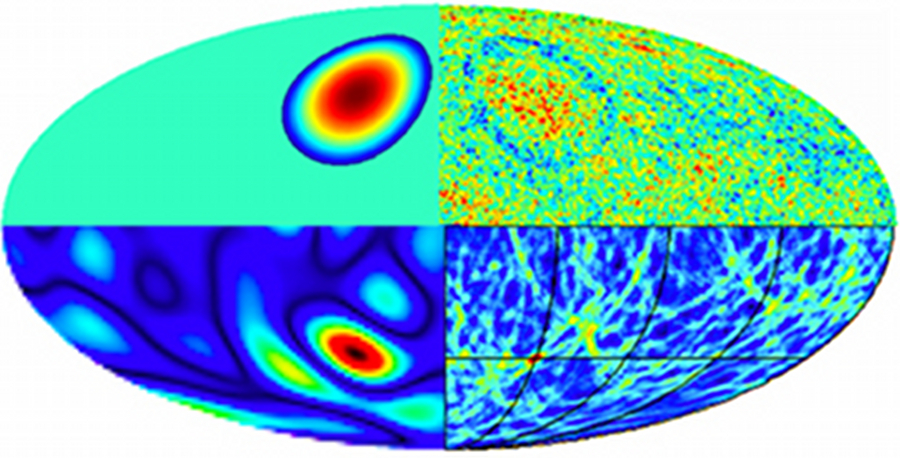
 Credit: UCL
Credit: UCL
Searching for the Next Universe
In the weird-but-(probably)-true category is the notion that our entire visible Universe is but an inflated region of a formerly tiny volume of the entire Universe. The idea of an inflated Universe helps cosmologists solve important paradoxes, like why the Universe is so flat, and why the temperature of the Universe is so uniform. But if inflation happened in one region, who's to say it couldn't have happened somewhere else? If it did, then our Universe is not alone- it may simply be one of any number of individual alternate Universes in a multiverse. In these "bubble universes", conditions and physical constants (like the speed of light) might be quite different than they are here (how would your life be different if the speed of light was only 30 kilometers per hour, for example). Finding evidence of these bubble universes is, as you probably imagine, extremely difficult. But maybe not impossible - a team of cosmologists from University College London (UCL), Imperial College London and the Perimeter Institute for Theoretical Physics has considered how to detect the collision of our Universe with another universe in the Multiverse. Such collisions, in theory, should imprint patterns in the cosmic microwave background, like the circular interface of produced by the collision of two soap bubbles. This team has developed careful mathematical methods to search for these patterns in the small differences in our Universe's temperature as measured by space-based thermometers like the Wilkinson Microwave Anisotropy Probe and the Planck Observatory. The image above represents
the signatures of a bubble collision at various stages in the mathematical analysis. A collision (top left) induces a temperature modulation in the CMB temperature map (top right), which is then refined and identified via detailed statistical tests in the analysis.
It's too soon to tell whether such multiverse collisions have taken place, but new data from Planck may give us the evidence we need to prove we are not alone.
Published: August 22, 2011
<
HEA Dictionary ● Archive
● Search HEAPOW
● Other Languages
● HEAPOW on Facebook
● Download all Images
● Education ● HEAD
>

Each week the HEASARC
brings you new, exciting and beautiful images from X-ray and Gamma ray
astronomy. Check back each week and be sure to check out the HEAPOW archive!
Page Author: Dr. Michael F. Corcoran
Last modified Monday, 26-Feb-2024 17:35:47 EST


